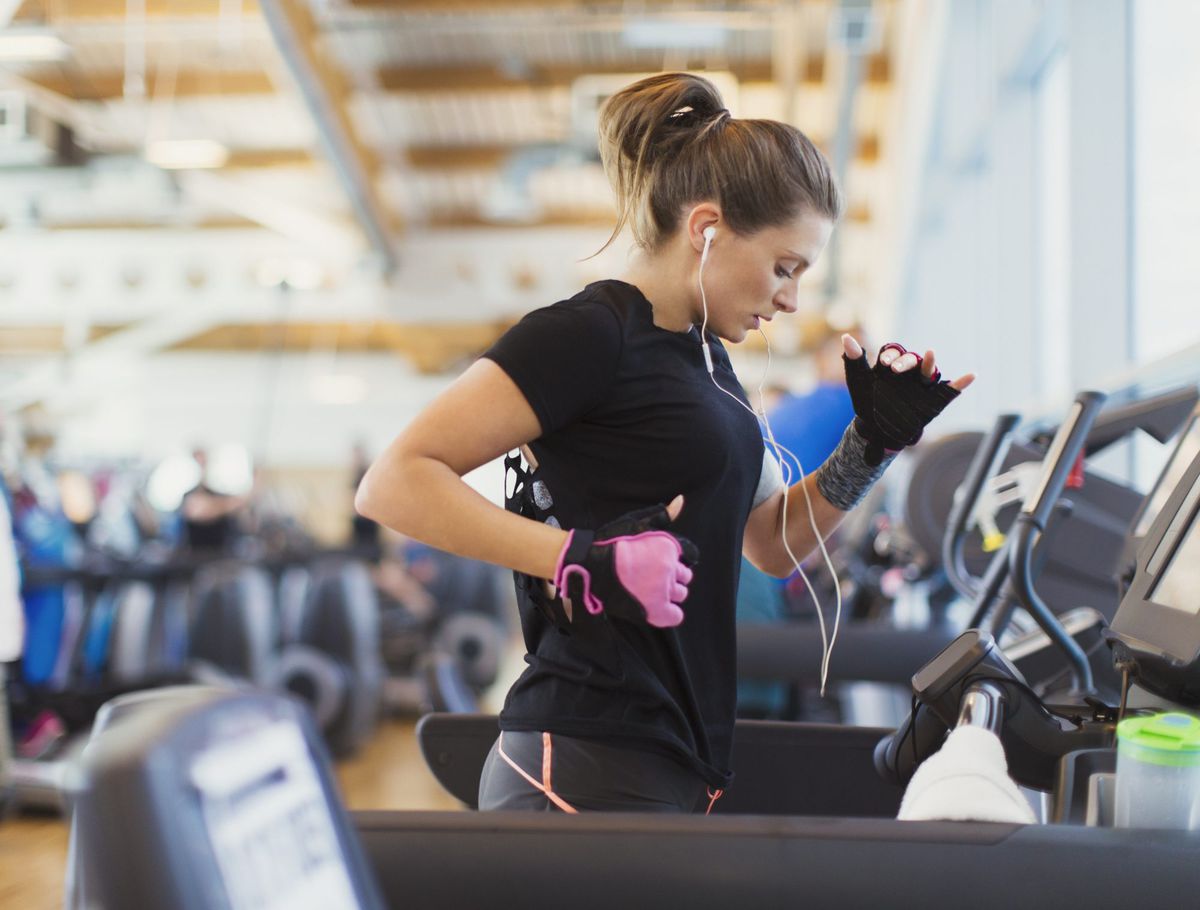So you're killing it on the treadmill when all of a sudden you feel a little pee trickle out. Yikes. You do a hard squeeze to stop the flow, hoping no one else notices . . . or sees the drops of urine you're afraid are showing through your leggings.
Urinary incontinence is something 25 million people can relate to, with up to 80% of these sufferers women. It's the involuntary leakage of urine, maybe a few drops, maybe more. The condition causing this to happen during a workout is called stress incontinence, and it means that something's putting pressure on your bladder, explains Michele Olson, PhD, senior clinical professor of sports science at Huntingdon College in Alabama. Stress incontinence is the same type of incontinence that makes some women leak when they cough, giggle, or lift something heavy, she says.
RELATED: What Is 'Vaginal Massage' and Could It Help Your Sex Life?
Certain exercises make you more prone to accidental pee squirts, and you may not know which ones are culprits until you suddenly spring a leak in the middle of a bodyweight class. Here's a cheat sheet on which moves are mostly likely lead to leaks, plus how to strengthen your pelvic floor muscles so you stay dry at the gym (but it's probably still a good idea to wear a backup—Depend Fit-Flex Underwear, anyone?—just in case).
Squats
When you do a squat, you pull in the muscles that can in turn put pressure on the bladder, then push those muscles downward, says Olson. The result is that “urine is virtually pushed into the urethra, or the bladder becomes overactive due to the pressure on it,” she says.
Running
A great run lets you zone out while your muscles do all the work . . . but it's hard to get lost in your thoughts when you're putting pressure on your bladder with each step, increasing the odds of a leak. For a quick fix, get off the treadmill or running trail and ease the impact by using a stair climber, suggests Katie Dunlop, certified fitness trainer and founder of Love Sweat Fitness.
RELATED: Why You Should Never Squat Over the Toilet Seat
Skaters
Skaters strengthen your legs and glutes while giving you a cardio boost. "They’re a great plyometric move but can totally cause problems if you have incontinence,” says Dunlop, as there’s lots of squeezing of the abdominal muscles—which puts pressure on the bladder—and jumping from side to side without a break.
Lunge jumps
Another lower-body plyometric move, lunge jumps lead to bladder pressure as well . . . which can mean leaks. A fast solution: “Simply take the jumping out and walk your lunges," recommends Dunlop.
Jumping rope
Jumping rope is a lot of fun and great for your calves, but not so much for your bladder. You’re constantly jumping—no pause whatsoever. To work the same muscles (but without the awesome cardio boost), "try a relevé," says Dunlop. "Lift up on your toes bringing your heels off the floor. Lower back down and repeat."
RELATED: 4 Common Pee Problems and How to Treat Them
How to prevent stress incontinence and still work out
Stress incontinence can be attributed to weakened pelvic floor muscles, and one way to strengthen those muscles is by doing kegels. (As you probably know, kegels can make a difference in your sex life too). To do them, Dunlop advises that you “imagine you have to go to the bathroom and want to stop it mid-stream. Tighten and hold for 5 seconds, then release. Eventually try to hold for up to 10 seconds or more."
You can also try pelvic tucks. Lie on your back with a neutral spine, then tilt your pelvis forward to engage your lower abdominal muscles. "Focus on moving your pelvis from neutral and scooping it forward," says Dunlop. "Many people make the mistake of popping their booty back before tucking forward, which is less effective." Contract your pelvic floor muscles as you tuck and relax back to neutral.
RELATED: These Are the Moves That Really Make Women Orgasm, According to Science
Another option is to sit on a stability ball or soft chair (at home or at work) and actively pull your pelvic area up and away form the ball or chair cushion. “This will train your muscles to be more active in holding up the bladder, so it doesn’t descend as far when you jump or heavily contract your abdominal area during exercise,” Olson explains.
Elevator exercises can help too. Says Olson: “Pull up your crotch area as far as you can and hold for 10 seconds. Then pull it up about 75% as far as it can go and hold, then 50% as far, and 25% as far. Repeat this sequence several times. It precisely trains your pelvic floor and can actually cause you to break into a sweat."
